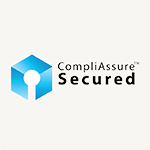
Although a patch alleviates the threat, a vulnerability dubbed GhostToken reveals the danger of installing third-party integrations into sanctioned apps. GhostToken allowed attackers irrevocable access to an individual’s Google account using an authorized third-party application converted into a malicious trojan. Bad actors could hide in plain sight by removing the application from a Google user’s Application management page, creating access in perpetuity without the victim knowing. Any of Google’s 3 billion Workspace’s users could be vulnerable to this attack.
A patch released on April 7 remediates this particular issue but speaks to a broader challenge with integrating third-party applications into your core cloud solution stack. Sure, integrations can enhance productivity, but they broaden the attack surface. How can you protect yourself and your clients?
Permission-based controls
Review and manage permissions for all third-party integrations, applications and services that have access to your accounts. Limit permissions to only what is necessary. Revoke access for other applications that you no longer use or do not trust. Move with caution when granting permissions to avoid inadvertently providing unnecessary, exploitable access.
Application Whitelisting/Blacklisting
Consider implementing application whitelisting for only highly trusted applications and services. Additionally, block or restrict access to unauthorized or suspicious applications.
Review and manage app permissions
Regularly review and manage the permissions granted to applications and services that may have access to your accounts and remove any unnecessary permissions.
Enable account recovery options
Set up and maintain an active account recovery method, such as a secondary email address and phone number to more easily recover your account if compromised or locked.
Keep Applications updated
Promptly perform updates to all applications and services, including web browsers, operating systems, and mobile applications, especially when they are associated with your credentialed accounts. This will ensure you are up to date with the latest security patches to protect against known vulnerabilities.
Multi-Factor Authentication (MFA)
Enable two-factor authentication (2FA) or multi factor authentication (MFA) for your accounts to add an extra layer of security. This can prevent unauthorized access even if your password is compromised.
Defend Yourself
Partner with a SOC that implements 24/7 monitoring, alongside prevention-centric cybersecurity to avoid vulnerabilities, like these. Ensure that your SOC also has an incident response plan in place for mitigation and remediation.
Stay Educated
Keep up to date on the latest security best practices, vulnerabilities, threats, and trends related to your accounts, applications, services, and operating systems to stay vigilant and secure. BLOKWORX provides information on the latest vulnerabilities in the wild and how the services we provide protect our clients, along with helpful tips on keeping your security hygiene elevated.
Bottom line, in order to prevent a vulnerability like this, prioritize security over access. By implementing these steps and following the best practices for cyber security hygiene, you can significantly reduce the risk of Ghost Token and all other vulnerabilities or threats.




